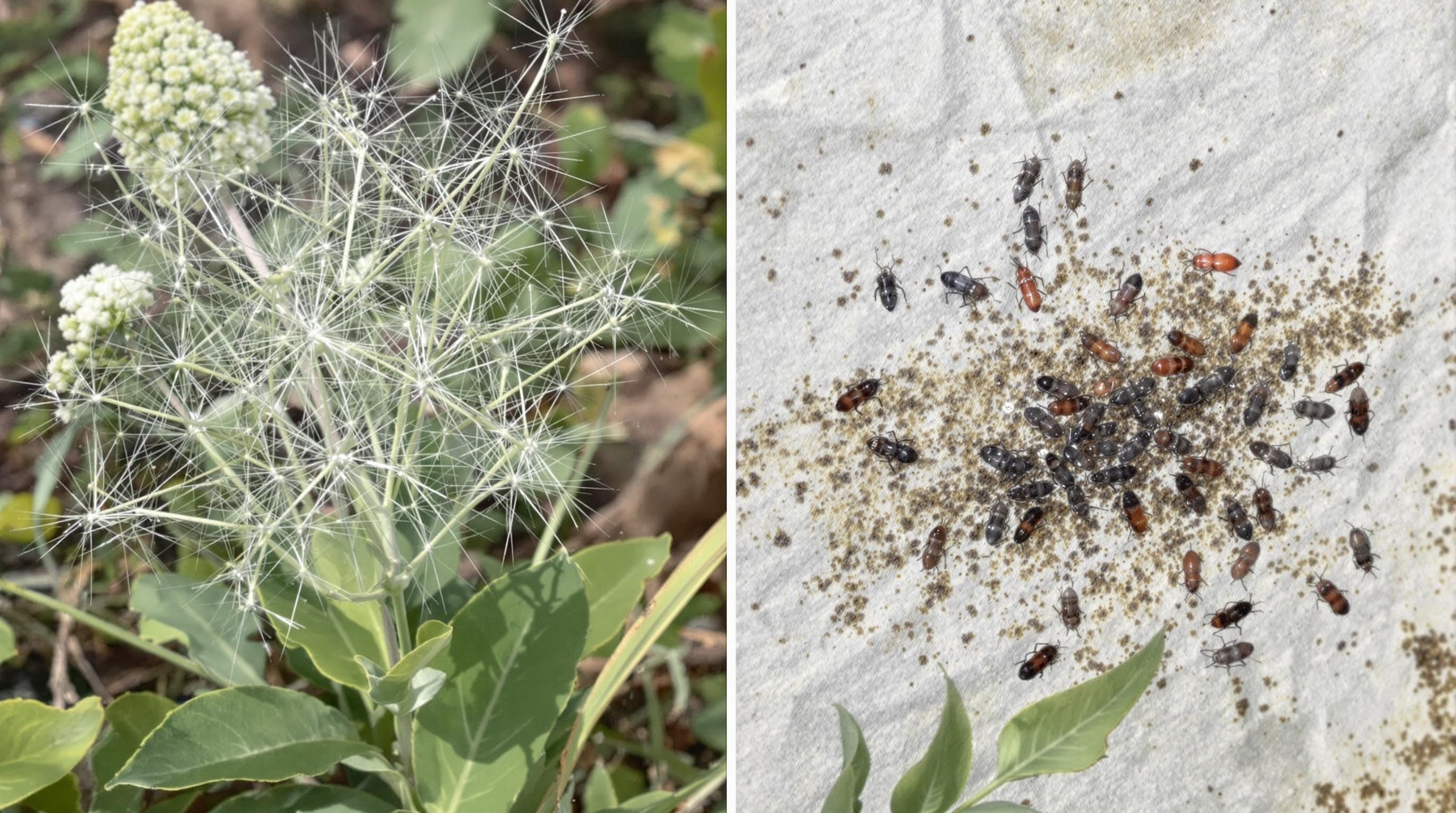Related Articles
- The Hidden Influence of Ergonomics: How Tool Design Shapes Our Physical Spaces and Daily Lives
- The Silent Influence: How Hidden Home Implements Shape Our Daily Routines and Spaces
- The Counterintuitive Role of Chaos: How Messy Tool Storage Can Lead to Unexpected Home Innovations
- Exploring the Unseen: How Audio Experiences Shape the Art of Domestic Spaces and Color Perception
- Rethinking the Mundane: How Everyday Objects are Becoming the Canvas for Modern Artistic Expression in Home Spaces
- Cultivating Chaos: The Surprising Benefits of Embracing Weeds in Your Garden Ecosystem
9 Uncommon Insects That Make Your Garden Thrive: Embracing Nature’s Tiny Allies for a Flourishing Landscape
9 Uncommon Insects That Make Your Garden Thrive: Embracing Nature’s Tiny Allies for a Flourishing Landscape
9 Uncommon Insects That Make Your Garden Thrive: Embracing Nature’s Tiny Allies for a Flourishing Landscape
1. Introduction to Insect Allies
When we think of gardening, our minds may primarily gravitate towards popular bees, butterflies, and ladybugs. However, many lesser-known insects play a vital role in maintaining a healthy garden ecosystem. By embracing these uncommon insects, gardeners can create a flourishing landscape that thrives naturally.
Insects are not just pests; they are essential partners in gardening. They contribute to pollination, pest control, and soil health, enriching the biodiversity of the garden. By understanding and welcoming these tiny allies, we can enhance our gardening practices and foster a more sustainable environment.
This article highlights nine uncommon insects that can bolster your garden’s health and prosperity. Learning how to incorporate these beneficial bugs into your gardening strategy can lead to a bountiful harvest and a vibrant landscape abundant in life.
2. Assassin Bugs
Assassin bugs are predatory insects that feast on a variety of garden pests, including aphids, caterpillars, and other soft-bodied insects. With their sharp beaks, they inject venom into their prey, immobilizing them before consumption. This unique hunting method makes them allies in organic pest control.
These bugs are often characterized by their robust bodies and long legs. Surprisingly, they also exhibit a unique form of camouflage, allowing them to blend in with their surroundings, which aids in their hunting capabilities. Their presence in the garden means you have natural pest controllers actively working for you.
Incorporating assassin bugs into your garden can be as simple as creating a diverse and balanced ecosystem, providing them with suitable habitats. By avoiding pesticides and promoting plant diversity, you will attract these remarkable insects and benefit from their natural pest management skills.
3. Praying Mantises
Praying mantises are one of the most recognizable insect predators found in gardens. Not only do they consume common pests like aphids and beetles, but their appetite often extends to larger insects, including other beneficial bugs. Their unique posture resembles praying, hence their name.
These fascinating insects are skilled hunters, using their exceptional vision and rapid reflexes to capture prey. Gardeners appreciate mantises for their voracious appetite and ability to maintain pest populations. However, it’s essential to ensure a balanced population in your garden to avoid unintentionally harming other beneficial insects.
Introducing mantises into your garden can be done through the purchase of mantis egg cases. By ensuring they have plenty of foliage and shelter, your garden can become a sanctuary for these marvelous predatory insects, helping to create a sustainable atmosphere.
4. Ground Beetles
Ground beetles are an essential part of the soil ecosystem and are notable for their predatory behavior. These nocturnal insects primarily feed on soil-dwelling pests like slugs, caterpillars, and various larvae, making them indispensable allies in the garden.
Characterized by their hard exoskeletons and agile bodies, ground beetles are often found hiding under rocks or mulch, ready to hunt at night. This unassuming position allows them to control pest populations effectively without drawing attention to themselves.
Encouraging ground beetles in your garden requires cultivating a healthy soil environment. By avoiding chemicals and maintaining a layer of mulch, you can provide habitats that ground beetles thrive in, ultimately increasing your garden's natural pest management efficiency.
5. Lacewings
Lacewings, often referred to as “aphid lions” in their larval stage, are excellent natural predators of aphids, spider mites, and thrips. Their delicate green or brown wings and unique lace-like patterns make them aesthetically pleasing in any garden setting.
Adult lacewings lay their eggs close to aphid populations, ensuring their larvae have immediate access to food upon hatching. Not only effective against pests, lacewing larvae also show voracious appetites, consuming hundreds of pests in their short lifespan.
To attract lacewings, gardeners should plant a variety of flowering plants that offer nectar and pollen. Establishing a habitat that supports lacewing life cycles will contribute significantly to keeping pest populations in check naturally.
6. Hover Flies
Hover flies, often mistaken for bees due to their similar appearance, are crucial pollinators and pest controllers. Their larvae feed on aphids and other soft-bodied insects, making them valuable allies to any garden that requires organic pest management.
These insects are particularly important during the summer months when many plants are in bloom. Hover flies are attracted to flowering plants like dill, fennel, and marigolds, which can effectively enhance your garden's pollination process while keeping pest populations at bay.
By providing a consistent source of nectar through diverse planting, gardeners can cultivate a hover fly population that supports both pollination and natural pest control, leading to a thriving garden scene.
7. Rove Beetles
Rove beetles, although less visible, are silent yet powerful allies in the garden. These agile predators feed on a variety of pests, especially slugs, larvae, and even other insects like aphids, effectively reducing pest numbers without the need for chemical pesticides.
With a unique elongated body and short elytra, rove beetles can maneuver through ground debris and foliage with ease. Their proactive approach to pest management makes them valuable when considering integrated pest management strategies within gardens.
Including organic matter in your garden, like compost or leaf litter, can sustain rove beetles’ populations. Creating a welcoming habitat will enhance their presence, giving your garden additional layers of pest control.
8. Spider Mites
Though initially viewed as pests, certain types of spider mites can act as beneficial insects under controlled circumstances. By preying on smaller pests, they can help to regulate pest populations. This duality underscores the importance of identifying insect types properly.
Spider mites thrive in warm and dry conditions and often reside beneath leaves. While they can become problematic in high numbers, intuitively monitoring their populations can promote a balanced ecosystem.
Encouraging a diverse range of plants helps maintain healthy spider mite levels and provides essential food sources. Striking a balance is crucial, as it allows these mites to function within your gardening ecosystem favorably.
9. Conclusion: Embracing Nature’s Helpers
Gardening is more than just planting flowers or vegetables; it’s about creating a thriving ecosystem where various species coalesce to support one another. The uncommon insects discussed in this article can play an essential role in your garden’s productivity and health.
Instead of relying solely on synthetic pesticides, embracing these tiny allies can lead to a more sustainable gardening approach that benefits not just plants but the entire environmental landscape. By understanding their roles, gardeners can find balance in nature that promotes biodiversity and resilience.
Incorporating these insects into your garden enhances pest control and boosts pollination, setting the stage for a lush, vibrant, and fruitful environment. Let’s redefine our approach to gardening by welcoming and nurturing these unsung heroes of the ecosystem.





